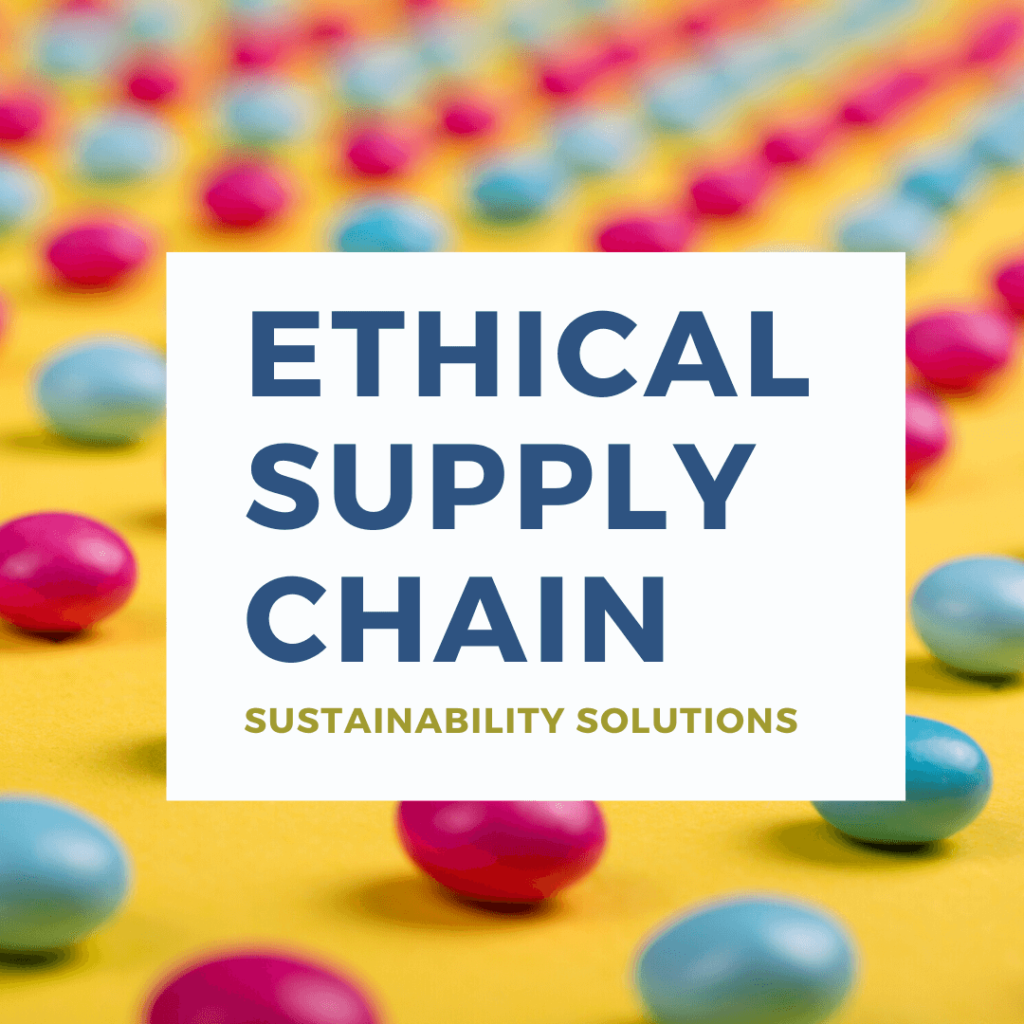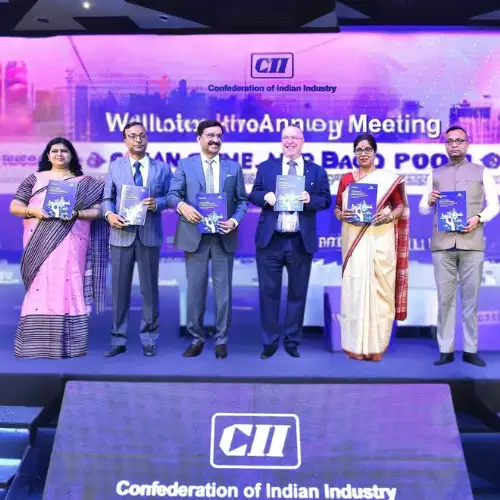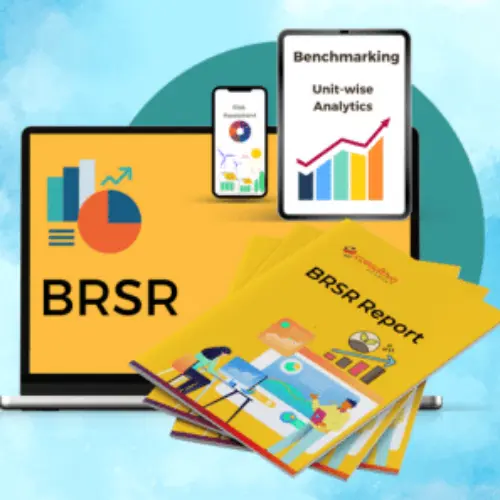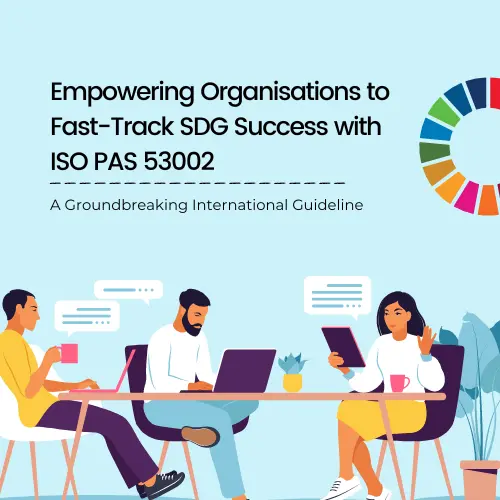Consultivo Blog | Social & Sustainability | Ethical Supply Chain
| Supply Chain Management
A sustainable supply chain can make a significant impact in promoting and protecting human rights, fair labour practices, environmental protection & progress and business ethics policies. A sustainable supply chain management extends a long term strategic advantage and inclusive growth; and also helps in building strong brand equity in the future.
People don’t buy what you are doing, they buy the purpose. Obviously, it happens once they are ‘informed buyers with purchasing power’ and there’s a choice.
A few months back, to enjoy a couple of hours of escapism, I took a leisurely walk down the city streets. Suddenly a conversation drew my attention. Two youngsters were keen to buy potato chips for their munching.
The tall one wearing a blue T-shirt said, “I don’t prefer to buy the local items due to the taste only. You see, branded chips are available within the market at the same price!”
“But the quantity is more within the local packs.” said his companion, dressed in hip-hop jeans.
The boy in blue said in a humorous tone, “Always behave in a responsible manner. In any case, low cost can’t be the only criterion to buy even a small thing. Shouldn’t we look for the way they made it? Are the potato farmers getting their fair prices? Big companies are doing pretty well in this area.”
The hip-hop jeans replied in a sarcastic manner, “Bro! Things are seldom what they appear to be. Hidden risks are there in unexpected places. It’s all a crafted story!”
They took a turn and my link disrupted. But I was impressed by the conversation of the next generation. To my delight, they instantly bonded with my thoughts. They’re so concerned and well-informed buyers!
Now, many brands have to go an extended way to build a sustainable supply chain to meet the changing needs and expectations of the consumers, today or tomorrow.
Indeed, supply chain practices emerge together with the very best sustainability risks of any organisation or brand. The size and complexity of the many supply chains make the matter harder.
As a result, many global corporations have pledged to work with suppliers who follow social and environmental standards. Typically, they expect their first-tier suppliers to follow those standards, and that they successively will make sure the next levels’ compliance.
They aim to make a cascading effect that often finally ends up in ticking the checklist, unfortunately.
Where we face the challenges
Challenge 1: Top driven? Not always
Many global supply chain sustainability initiatives expect top management to demonstrate leadership.
The organisation can set expectations for best practices across its supply chain only if the board of directors and CXOs see the supply chain as an extension of their workforce and community.
These can focus on key areas like the selection of supply chain players, training, auditing, and remediation.
Challenge 2: Cross-cutting issues
Ethical Supply Chain or Supply Chain Sustainability is a cross-cutting issue. All four UN Global Compact issue areas – human rights, labour, environment, and anti-corruption are applicable here.
A sustainable supply chain can make a significant impact in promoting and protecting human rights, fair labour practices, environmental protection & progress and business ethics policies.
Challenge 3: Beyond procurement
To manage the cross-cutting issues and related risks, a broader understanding of the organisation is required. It is vital how decisions are made beyond procurement which may affect the availability chain.
For instance, product developers, legal departments, HR, EHS, brand & marketing, corporate communications- all can have some points to share.
Companies should consider their supply chain as a whole, and start considering the suppliers which will have the foremost significant challenges to deal with.
Challenge 4: Problem lies nearer to the bottom
Many of the violations are found beyond the first-tier suppliers and in most cases, it’s nearer to the bottom-most level of the supply chain. First-tier suppliers are rarely concerned with their own suppliers’ sustainability practices.
It has been observed that a large number of bigger brands are even shy to map their supply chain beyond Tier 1 suppliers. A UN survey in 2018 showed that only 53% of their Action Platform participants were mapping their suppliers beyond Tier 1.
The decision to map beyond Tier 1 suppliers is greatly influenced by the character, location and priority of the commodities supplied.
As an example in high-risk sectors, like mining, metal, pharmaceutical and chemical industries, responsible companies may map up to six or seven tiers of suppliers. Thanks to the strict regulations in some countries to make it happen.
Challenge 5: Traceability
Traceability may be a long-standing pain within the neck for larger supply chains and can be the most impactful tool for advancing sustainability objectives.
Unfortunately, it still has a long way to go before it’s an integral part of sustainable supply chain management and is used widely by companies.
Even the customers are considering the product’s sustainability attributes into their purchasing power but an insignificant number of products are traceable on the sustainability matrix.
Traceability must be a collaborative effort among the various stakeholders involved from cradle to the shelf of any product.
Challenge 6: Lack of uniform and relevant standards & guidelines
Companies in many cases are unable to speak their expectations up to rock bottom level of sourcing in terms of standards, protocols, guidelines etc.
Companies, having their own sustainability standards to ensure responsible and ethical supply chain management, are very very limited in numbers.
Challenge 7: Internal challenges
No matter how big or small the business is, every company’s experience internal challenges when managing sustainability across supply chains.
Lack of trained resources, availability of required data and technology, to name a few.
Challenge 8: Buy-in from process owners
One of the critical most challenges remains buy-in from different process owners. Sustainability advocates often find it difficult to demonstrate and communicate the worth of sustainability to business.
It is hard to quantify and assess the impact of investing in social, environmental and governance practices, at least on a short-term basis.
So, companies face difficulties in gaining high-level support for remedial actions against suppliers that behave irresponsibly.
Challenge 9: External challenges
Companies experience lots of external challenges when managing sustainability across supply chains which are mostly out of their controls.
They include weak institutional support, inconsistent labour & environmental legislation, crime, corruption, unethical competition, and mindset of suppliers.
Challenge 10: Critical issues
Issues like modern slavery, child labour, discrimination, lack of living wages, occupational health & safety, environmental legal compliance, global climate change, waste management, and eventually business ethics persist as most pressing risks in supply chains.
How to solve these problems?
Of course, board and CXO level buy-in is the prerequisite for solving the supply chain sustainability and ethical supply chain issues.
This high-level buy-in followed by a good governance system leads to motivated process owners towards sustainable supply chain management.
Backed with a high level of commitment and leadership, a right combination of the subsequent measures can bring a change – a very positive change.
Develop a robust governance framework:
Embedding E&S (Environmental and Social) issues across the governance process is usually an honest practice.
This includes performance measurement and reporting. We can find this successful model with many global majors.
Map the supply chain:
Collaborations are key to success:
Collaboration is essential for companies to make greater progress in achieving sustainable supply chain.
Collaborations can include a collective approach for industry-wise sustainability standards and shared resources.
Collaborators are often competitors, major suppliers, industry associations, and the Chamber of Commerce. Industry- academia partnership helps to solve persistent problems.
Industry associations also can help in regulation related advocacy to the government. It can ensure that nobody gets a competitive advantage from workforce & environmental exploitation.
There are several examples of industry-level collaborations. CORE (Code of Responsible Extraction) for mineral extraction industry, DRIVE Sustainability Initiative for Automotive Industry, Together for Sustainability (TfS) for industry, ‘trustea‘ for Tea Industry, ACT (Action, Collaboration, Transformation) on Living Wages for Textile Industry, Responsible Business Alliance for the electronics industry and Pragati for Castor Commodity – a few to say.
Working with NGOs and international impact organisations are often very beneficial.
It is an honest practice to engage investors in social and community-driven interventions.
Embrace technology and innovation:
Technology enables transparency and oversight through supply chains beyond Tier 1. Technology can play a really significant role in supply chain transparency and process automation.
Application of cloud platforms, real-time data analysis, blockchain technology is often considered useful.
Technology requires higher investments. Companies still can look for ways to leverage and enhance technological solutions. They support visibility, collaboration, and communication.
Process and product innovation along with technology are often the game-changers. Innovations do not occur all of a sudden.
Nurturing the innovation culture across the organisation is vital to success. Innovation integrated into core processes can do a miracle.
Communicate:
Communicate the expectations to the rock bottom level of the availability chain. Some good practices include communicating corporate values and culture, code of conduct (CoC), standards, guidelines, protocols and social responsibility of business.
The success stories lie within the efforts where the expectations are practical, doable, based on local perspectives, and well understood and accepted by the people involved.
A mere one-way communication of filling up generic checklists simply kills the aim.
Transparency in disclosure and communications is vital among the key enablers to realize stakeholders’ confidence.
Measurement & monitoring:
It’s important to be accountable by measurement, monitoring, tracking and reporting. Collection of data, its periodicity and quality is a problem.
It’s also important to assess where the best need for improvement exists, communicate back to them in a constructive way and provide encouragement for improvement.
The first party, second party and third party assessment, due-diligence and audit program can measure performance improvement over time.
Human Rights Impact Assessments (HRIA) are recommended by The United Nations Guiding Principles on Business and Human Rights and the United Nations Global Compact. It’s a crucial step for effective human rights due- diligence across supply chains.
Training, capacity building and engagement:
Often, the knowledge and competence of sustainable practices remain restricted at the tip of the iceberg.
They do not get transferred across the supply chain and particularly at the bottom level. It’s important to develop capacity building programs as per the necessity of the various supply chain players at different levels.
Online self-learning modules in vernacular languages reduce costs. They also maintain consistency in learning modules. They should cover the practical benefits of such initiatives.
It’s very good practice to drive continuous awareness programs for the stakeholders- investors, customers and consumers.
They are to be made aware of the sustainability-related risks and their management practices. This investment pays heavy dividends, once they stand by you even in difficult times.
Integrating supply chain sustainability and corporate social responsibility
There is an ample number of business cases around supply chain sustainability, growing as a part of Corporate Social Responsibility.
A careful blend can produce better output. They will be complementary to each other.
Optimising cost with the help of sustainable practices – becomes business cases
It is vital to integrate environmentally and financially viable practices into the core processes across the supply chain lifecycle.
They ought to be practised from product design & development to raw material planning & procurement, sustainable agriculture practices, manufacturing, packaging, transportation, warehousing, distribution, consumption, return and disposal.
Sustainable supply chain practices can assist organisations in reducing their carbon footprint. It also helps in optimising operations to achieve greater cost savings and profitability.
Caution:
It is sad but true that we are living in an age when blowing one’s trumpet is the unwritten societal norm.
It is evident that a segment has started misusing the ethos of supply chain sustainability.
They focus more on communications to get desired attention than making positive interventions at the required levels. There are lots of unseen behind the scenes!
A business case indeed:
A sustainable supply chain management is not merely a tag to the companies but a pure business case at this hour.
It extends a long term strategic advantage and inclusive growth. This also helps in building strong brand equity in the future.
Of course, there is no quick and easy path. Sustainability solutions can help businesses to realise profit while protecting people and the planet.

Share this post
Category: Blog
Tags: Social & Sustainability, Ethical Supply Chain, Supply Chain Management
About the author
CEO at Consultivo
Saikat Basu is a long time sustainability and risk management professional and entrepreneur. He is having a diversified exposure to various management practices in the areas of strategic leadership, organisation excellence, financial management and people engagement. He has worked intensively with 200+ national and international standards on responsible business. He is a member of several sustainability (SHE Award, Environmental Excellence, Social Impact) award program design & jury committee. He is a passionate blogger and visiting faculty in academics.
Related insights
View more in Impact Stories | Blogs | Knowledge Bank | News and Events













